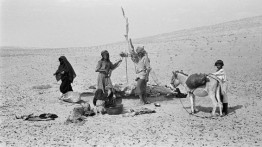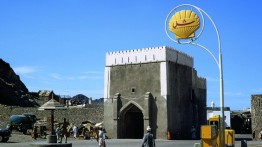Three Views of Oman: The Photography of Wilfred Thesiger, Charles Butt and Edward Grazda 1945-2006
Wed, Mar 11, 2015 12am - Sat, Apr 25, 2015 12am
Presented by The Irwin S. Chanin School of Architecture of The Cooper Union, The Ministry of Awqaf and Religious Affairs of the Sultanate of Oman and IAV
“Three Views of Oman is a great example of the dialogue of cultures. Rather than repeating the Orientalist approach that has weakened so many Western studies of Arabic societies, this exhibition builds a new bridge between two civilizations with different histories but shared values.”
- Radwan Ziadeh, George Washington University
Collected here for the first time is a history of Oman in images. One of the most developed and stable countries in the Arab world and among the earliest adherents to Ibadi Islam, the sultanate sits along the east coast of the Arabian Peninsula. From early days of world trade through the port of Muscat to contemporary engagement with international diplomacy and the West, Oman has always evoked beauty and mystery in equal measure. The Three Views of Oman exhibition reveals the country as its contours emerged over the past seventy years in an intimate portrait through the eyes of the West, as captured in images by English explorer Wilfred Thesiger in the 1940s, British Army major Charles Butt in the 1970s, and award-winning American documentary photographer Edward Grazda in the first decade of this century. The exhibition chronicles the rapid social and physical changes in Oman, as well as the changing nature of photography itself over 60 years. These original photographs have traveled to Oxford and London, England; Grenada, Spain and other destinations; this will be the only presentation in New York City.
Wilfred Thesiger (1910-1993), world-renowned explorer and traveller, was born in Addis Ababa, Ethiopia (then Abyssinia). He lived in Oman from 1945 thru 1949, taking photographs as a member of the Middle East Anti-Locust Unit. Travelling by camel with Bedouin companions, he crossed the Empty Quarter (twice). Thesiger is well known for his photographs, and his celebrated book Arabian Sands (1959). Photographs by Sir Wilfred Thesiger appear by permission of the Pitt Rivers Museum, University of Oxford: www.prm.ox.ac.uk
Charles Butt (1935-2006) was born in Surrey, England. After over a decade of field service for the Intelligence Corps of the British Armed Forces, Butt was accepted into the Sultan of Oman’s armed forces in 1966. A keen amateur photographer, Butt documented his time in Oman from 1966-1978. Photographs of Charles Butt appear by permission of the Middle East Centre Archive, St. Anthony’s College, Oxford, Charles Butt Collection GB165-0043: www.sant.ox.ac.uk/mec/meca.shtm1
Edward Grazda (1947- ) was born in New York City. Grazda has travelled the world as a documentary photographer. His photographs have appeared in many publications and are part of important private and public collections. In 2005, Grazda was commissioned to produce a portrait of daily life in Oman by the Institute for American Values and The Ministry of Awqaf and Religious Affairs of the Sultanate of Oman. For more information on this body of work, please see www.threeviewsofoman.com. Photographs by Edward Grazda appear by permission of the photographer and the Institute for American Values: www.americanvalues.org
Arthur A. Houghton Jr. Gallery
7 East 7th Street, 2nd Floor, between Third and Fourth Avenues
New York, NY 10003
Gallery Hours: Wednesday – Friday 2pm-7pm, Saturday and Sunday 12pm-7pm
Exhibition on view: March 11 - April 25, 2015
Public Reception: Wednesday, March 11 at 6:30pm
Panel Discussion: The Sultanate of Oman: Geography, Religion and Culture | Thursday, March 12 at 6:30pm
Located in the Arthur A. Houghton Jr. Gallery, 7 East 7th Street, 2nd Floor, between Third and Fourth Avenues







